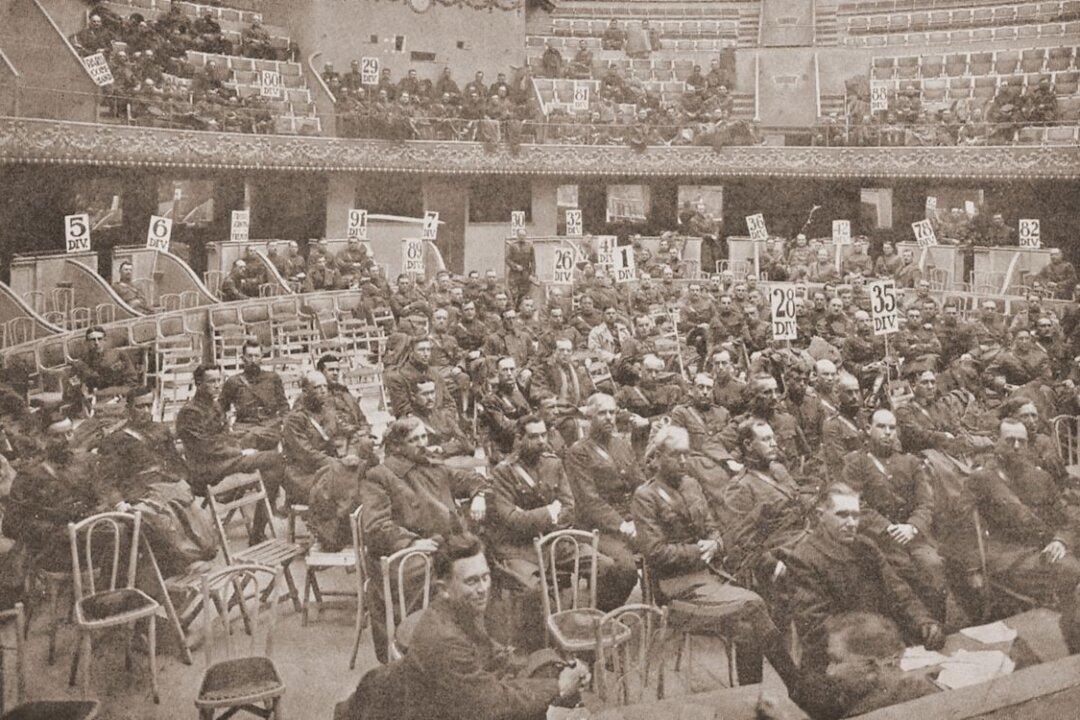The myths behind the German and Soviet soldiers are true, in the sense that the former were victorious by their military acumen and the latter were victorious by sheer mass. Nazi Germany’s military might is often referred to as the German War Machine, as it was a well-oiled machine practically top to bottom (ironically, the lack of oil helped lead to their demise).
Breaking Down the Soldiers
“Waffen-SS Soldier Versus Soviet Rifleman: Rostov-on-Don and Kharkov 1942–43” breaks down the German and the Soviet soldiers in combat, how they fared against each other over time in specific battles, and what led to their ultimate triumph or defeat. The book displays precisely what these soldiers―the Waffen-SS and Soviet rifleman―wore in battle, from boots to helmets; their gear, from canteens to bread bags; and their weapons, from guns to grenades.As interesting as that is on its face, the intriguing aspect of McNab’s study is the ebb and flow of the overall battles of Rostov-on-Don (July 1942) and the battles of Kharkov (there were four, though the author discusses the last two in February and August 1943). These battles were part of the ill-fated Operation Barbarossa, which Adolf Hitler and the Nazi high command orchestrated in hopes to defeat and annihilate the Soviet Russians.
The sheer numbers, noted by McNab, behind the June 1941 surprise attack into Soviet territory are staggering: 3.4 million Axis military personnel, 6,500 armored vehicles and tanks, 600,000 vehicles, 600,000 horses, more than 3,000 aircrafts, and tens of thousands of artillery pieces and mortars. As staggering as those numbers are, the Soviets possessed far more, especially in manpower.

The difference, which McNab thoroughly makes clear, was how the Germans were superior militarily and tactically compared to the Soviets. This provided the Nazis’ early success that quickly drove the Soviets further eastward into their own territory.
Motivational Factors and Tactical Flexibility
McNab indicates the national motivations between the two armies based on their military oaths. The Germans had pledged their allegiance to Hitler, while the Soviets pledged their allegiance to the Motherland and the socialist cause. Although both motivating factors are crucial to understanding the two sides during what the Soviets called The Great Patriotic War, McNab suggests the Soviets were motivated less by ideology, but rather “fought for genuine survival―one of the most powerful motivators of all.”The Waffen-SS soldier and the Soviet rifleman were both lightly armed, but this is where the similarities end. The Germans were allowed flexibility in adherence to orders. Commanders of companies were free to adjust tactics, even if it seemed like insubordination.
The Soviets were not given that freedom. It was strict adherence, even if it proved detrimental. It was only later that the Soviets learned that flexibility within smaller commands were necessary to the survival of their defenses, and eventually offensives.
This may have had much to do with the change McNab discusses regarding the politicization of the military. He notes that the “political commissars” were “embedded in the command structure down to the battalion level” possessing “equal authority with the unit commanders,” and it was not until 1941 and 1942 when they “progressively lost their authority over tactical decision-making” because it was “recognized that political interference could often compromise military effectiveness.”
McNab further proves the rule when it comes to the German and Soviet populace: Numbers win. In strict comparisons of numerical outcomes, the Germans far outperformed the Soviets. The Soviets, however, possessed numerical superiority. The author indicates that by the Fourth Battle of Kharkov, the Germans had suffered “unsustainable losses.”
Numerically, though, if the Germans had suffered the numbers the Soviets did, they would have depleted their military strength well before 1945. McNab gives a prime example concerning casualties: the Totenkopf, a division of the Waffen-SS, had suffered 1,458 casualties during a four-day fight. The Soviets, however, had suffered more than 50,000 during the same fight.
“Waffen-SS Soldier Versus Soviet Rifleman: Rostov-on-Don and Kharkov 1942–43” is an easy-to-follow read. The facts brought about by McNab are truly intriguing. He makes it easy to understand the ebbs and flows of these battles, which were actually microcosms of the overall outcome of Hitler’s Operation Barbarossa and the Great Patriotic War. Tactical maps, art, photos, and sidebars throughout enables the reader to further understand the inner workings of these harsh battles.
McNab has written a great work that explains more than just the outcomes of these battles.







